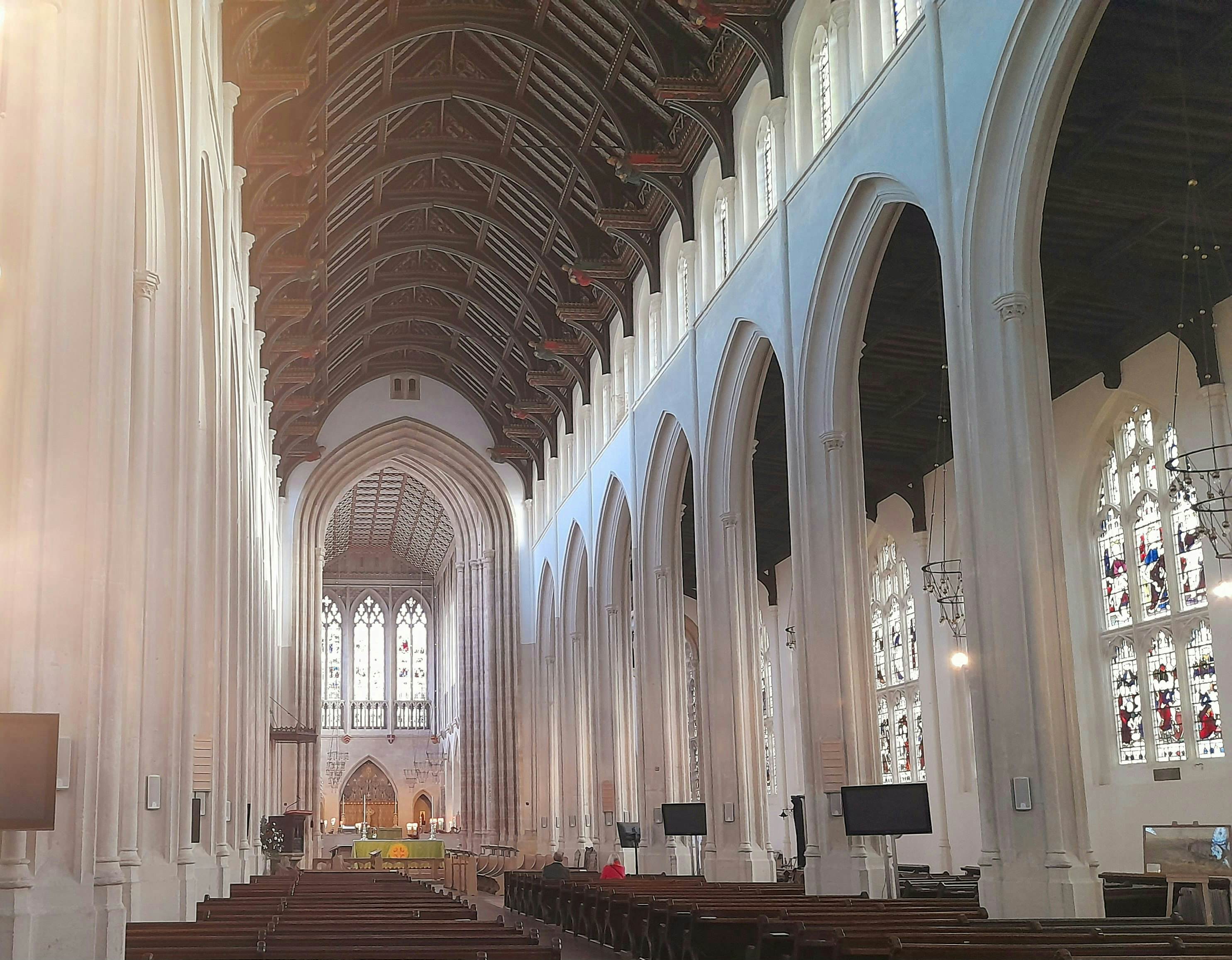St Edmundsbury Cathedral
About St Edmundsbury Cathedral
St Edmundsbury Cathedral, located in the historic market town of Bury St Edmunds in Suffolk, UK, is a magnificent example of Gothic Revival architecture and an important landmark in the region. Officially known as the Cathedral Church of St James and St Edmund, it serves as the seat of the Bishop of St Edmundsbury and Ipswich. Its tall, intricate tower and elegant interior draw visitors not only for its spiritual significance but also for its architectural beauty.
What makes St Edmundsbury Cathedral unique is its rich history that dates back to 1065 when it was part of the Abbey of Bury St Edmunds, one of the most powerful Benedictine monasteries in medieval England. The cathedral itself has undergone numerous transformations over the centuries. Most notably, its iconic 150-foot Millennium Tower was completed in 2005, adding a modern touch to the ancient structure, making it one of the newest cathedral towers in Europe. The blend of old and new in the design creates a unique atmosphere, representing centuries of English history and devotion.
The cathedral’s interior is equally impressive, featuring stunning stained glass windows, intricate stone carvings, and a peaceful cloister garden. The Lady Chapel and Choir are notable highlights, offering quiet spaces for contemplation. The cathedral also houses beautiful tapestries and memorials to past clergy and figures associated with the church's long history.
The best time to visit St Edmundsbury Cathedral is from late spring to early autumn when the weather is mild and the gardens around the cathedral are in full bloom. The cathedral hosts various events throughout the year, including concerts, exhibitions, and services, so checking the calendar of events can enhance your visit. Admission to the cathedral is free, although donations are encouraged to support its maintenance and activities.
One of the most intriguing legends associated with the cathedral is that of St Edmund, the Anglo-Saxon king and martyr to whom the town and cathedral owe their name. St Edmund was killed by Viking invaders in 869, and his remains were believed to have miraculous powers, attracting pilgrims for centuries.
Though the cathedral has not appeared in major films, its picturesque setting and historical significance have made it a popular destination for visitors seeking tranquility, spiritual reflection, and a glimpse into England’s ecclesiastical heritage. A visit to St Edmundsbury Cathedral offers both a peaceful retreat and a fascinating journey through time.
